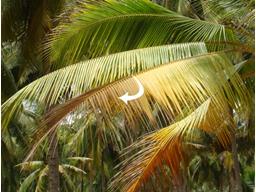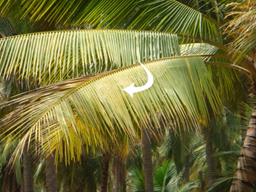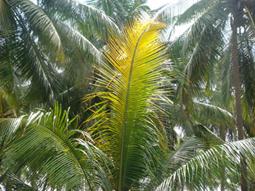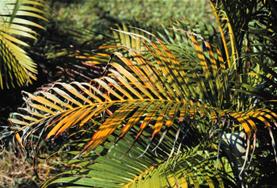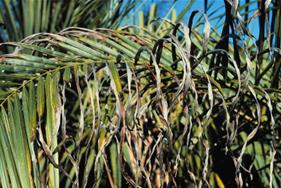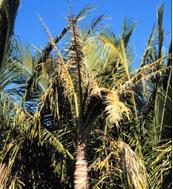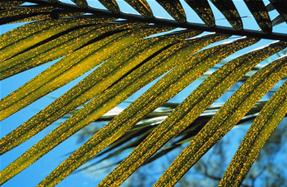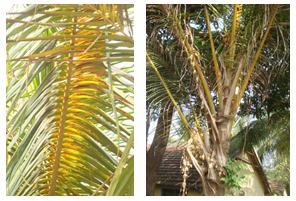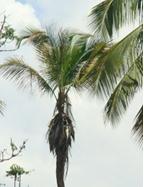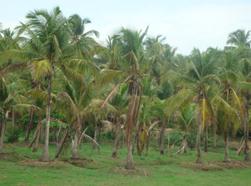 |
||||||||||||
|
||||||||||||
Physiological DisordersMajor Nutrients 1. Nitrogen (N) Deficiency Symptoms N deficiency is typically caused by insufficient N in the soil. Nitrogen deficiency begins as a uniform light green discoloration / yellowing (uniform chlorosis) of the oldest leaves. Yellowing starts from tip to base of the lower leaves and will proceed up. As the deficiency progresses, younger leaves will also become discoloured. Older leaves are golden yellow colour. Growth virtually stops when N deficiency is severe and become shedding of leaves. Diagnostic Techniques Nitrogen deficiency is easily diagnosed by symptoms alone, although leaf nutrient analysis can also be helpful. Nitrogen deficiency can be confused with Fe or S deficiency, although the chlorosis in those deficiencies is typically most severe on the youngest leaves. The reverse is true for N deficiency. Management Foliar application of 2% urea thrice at fortnightly interval or soil application of 1-2 kg urea / tree or root feeding of 1% urea (1 g/litre of water) 200 ml twice a year. Deficiency Symptoms
2. Potassium (K) Deficiency Symptoms
Diagnostic Techniques Visual symptoms alone may be sufficient for diagnosis of this disorder although leaf nutrient analysis may be helpful in distinguishing late stage K deficiency from manganese (Mn) deficiency. These two deficiencies can be extremely similar from a distance, but close examination should reveal characteristic spotting and marginal necrosis in K deficiency or necrotic streaking for Mn deficiency. Potassium deficiency symptoms are also more severe toward the leaf tip and are less so at the leaf base. The reverse is true for Mn deficiency. Management
Deficiency Symptoms
3. Phosphorus Deficiency Symptoms
The growth, leaf size and leaf number reduced. The root growth is restricted if phosphorus deficiency is recorded. There are no clear visual symptoms of phosphorus deficiency other than stunting and decrease in yield. Management Deficiency Symptoms
4. Sulphur Deficiency Symptoms Typical symptoms are yellowish-green or yellowish-orange leaflets. Old leaves remain green. Leaves droop as the stem becomes weak. In older palms, leaf number and size are reduced. Sometimes an apron of dead fronds develops around the stem due to weakness of the rachis. Nuts may fall prematurely. Copra is rubbery and of poor market quality. Management Soil application of gypsum 2 - 5 kg/tree/year. Root feeding of 0.2% (2g/litre of water) gypsum. Deficiency Symptoms
|
||||||||||||
Last Update : December 2014 |
Back | |||||||||||
© All Rights Reserved. TNAU-2014. |
||||||||||||
